Hello everybody! I know some of you have been waiting for my doenjang and ganjang recipes for a long time! Today I feel a real sense of achievement to release this recipe here. It’s one of the recipes in my cookbook, and whether you have my book or not, this video and recipe should still be useful to you.
Korean fermented soybean paste, called doenjang (된장), is more than just a seasoning or an essential ingredient in many iconic Korean dishes. It’s part of who we are as Koreans and how we see ourselves. A meal of rice, kimchi, doenjang-soup (or doenjang-stew), and a few side dishes is for many Koreans, the definition of a meal: breakfast, lunch, or dinner. It’s impossible for us to imagine life without doenjang.
Salty, earthy, hearty, incredibly savory and delicious, it adds flavor to many dishes and makes them distinctively Korean. Making doenjang at home takes a long time, you have to be ready to commit to it for one year! It’s not hard to make, but takes patience and some hard work, and some special equipment. But as a bonus, Korean soup soy sauce (guk-ganjang:국간장) is a byproduct of making doenjang, so you get that delicious soy sauce for free!
Of course, you can always buy doenjang and guk-ganjang in a Korean grocery store, which is what most Koreans do. But the taste of store-bought can’t be compared to homemade doenjang and guk-ganjang, you will be knocked out over how delicious they are! And I’ve never found a brand of soup soy sauce in the store that satisfied me, which is why I always use fish sauce in my recipes as a substitute.
Besides the taste, making your own is fun and satisfying to eat. Over years of making, tasting, and fermenting these iconic Korean sauces, you’ll develop experience and sophistication in fermenting and eventually become a Korean food expert.
This video was a lot of fun to make. The recipe took me 2 years to develop, and the video took another year to film. It’s finally finished and I couldn’t be happier to share my recipe with you! Koreans traditionally start the process in the winter because the weather is good for drying soybean blocks. But I discovered that indoors, in my apartment in New York, any time is a good time to start making doenjang.
I hope you try it! Enjoy the recipe!
Special equipment
- An electric mat or blanket, or ondol-style heating in your house
- Cotton flour sacking or cheesecloth
- Cotton butcher’s twine
- A large shallow bamboo basket about 17 inches in diameter, or a large baking pan lined with waxed paper
- Dried rice straw or hay that’s been well washed and dried (optional)
- A cardboard box (an 18-x-10-x-7-inch box will hold 3 bean blocks)
- A 4- to 5-gallon Korean earthenware crock (hangari) with a lid
- A 5-quart Korean earthenware crock (hangari) with a lid
- 3-5 dried jujubes (daechu)
- 3-5 large dried hot chili red peppers (any variety; about 4 inches long)
- 3 (4-x-1½-x-1-inch) pieces hardwood charcoal
Ingredients
Makes 10 pounds of doenjang
- 5 pounds dried yellow soybeans (meju-kong), picked over, rinsed, and soaked in cold water for 24 hours
- 3½ gallons water
- 5 quarts plus ½ cup kosher salt (2 three-pound boxes of Diamond Crystal brand Kosher salt)
- 2 tablespoons honey
How to make doenjang
Make meju blocks from soybeans
Blocks of crushed soybeans are called meju (메주) in Korean, and they’re the foundation of doenjang-making.
- Drain the beans and put them in a large heavy pot. Add water that is three times as deep as the beans, cover, and cook over medium-high heat for 1 hour.
- Turn the heat down to medium and continue cooking until the beans are soft enough mash easily, 4½ to 5 hours, checking to make sure the beans remain covered with water, and replenishing as necessary. Drain the beans in a colander.
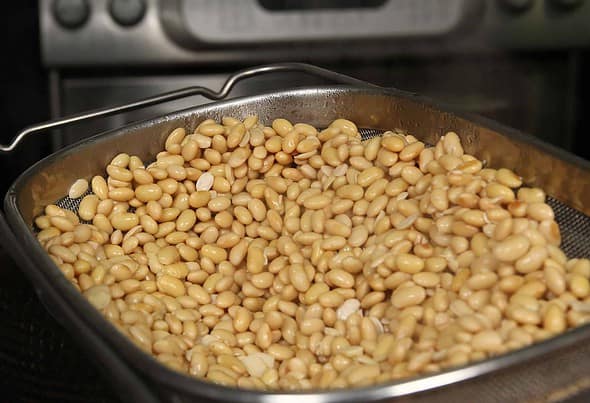
- Mash the drained beans to a paste in batches with a large mortar and pestle or in a food processor. Don’t finely grind them, leave some beans half-crushed.

- Divide the mashed beans into 3 portions. Knead each portion with both hands and shape into a firm rectangular block measuring 6 x 3 x 4 inches.


Ferment the meju
- Traditionally Koreans dry meju on the heated ondol floors of their homes, and if you live in Korea or have that kind of heating in your house, you can do that too. But in my NYC apartment I simulate ondol by putting an electric blanket on the floor. Line the blanket with a clean cotton cloth or waxed paper and set the blocks on top, or put them in an open basket. Set the heat to low. Dry the blocks, rotating them occasionally, until they are solid enough to hang, 3 to 4 days.

- Tie each block up in cotton twine and hang them. You can hang them outside but be sure to keep them covered and out of the rain, and if it’s too hot out they may rot. Inside, you can hang them from the ceiling with hooks. Wherever they hang, the spot should be cool and well-ventilated and all sides of the blocks should be exposed to air and not touching each other. Let the blocks hang for 6 weeks, until they are well dried out and smell a little pungent when you get your nose close to them.

- Now it’s time to ferment the bean blocks. Place a layer of dried rice straw or hay in the bottom of a cardboard box that’s just big enough to hold the blocks with a little space between them; the straw will insulate the blocks and attract good bacteria like Bacillus subtilis in the air. (Don’t worry if you can’t find straw or hay; the blocks will still attract good bacteria.)

- Cover the box and put it on the electric blanket. Set the heat to low and let the bean blocks ferment for 2 weeks. At this point, the well-fermented bean blocks will smell a little earthy and pungent and will be covered with white, brownish-yellow, or sometimes greenish fungi. (These fungi change the bean proteins to peptides and amino acids, which will give the bean paste its delicious nutty flavor.)
- Tie the fermented bean blocks up in cotton twine and hang from the ceiling, as before, for 1 month.


Soak the meju in brine
- Wash the blocks in cold water and to remove the fungi. Place the blocks in a shallow basket or on a baking sheet lined with waxed paper and let them dry in the sunlight for 1 day, turning them until every side of each block is dried.

- Combine the 3½ gallons water (56 cups) and 5 quarts of the kosher salt (20 cups) in a large bowl. Stir with a wooden spoon until the salt is thoroughly dissolved.
- Set out a 4- to 5-gallon earthenware crock. Put 2 pieces of the charcoal on a gas burner; turn on the flame, and heat until they are glowing red. (If you don’t have a gas burner, use the broiler: Put the charcoal pieces under the broiler and turn it on; remove the charcoal when it is red.) Use tongs to transfer the charcoal to the earthenware crock. Drizzle the honey over the burning charcoal. Cover the crock and wait for 5 minutes.

- Remove the lid. You will see lots of smoke and smell a good caramel aroma. This process sterilizes the inside of the crock and will give the sauce good flavor.
- Remove the charcoal and wipe the inside of the crock with paper towels. Add the bean blocks and salted water to the crock. Add the remaining piece of charcoal, the jujubes, and dried hot peppers; they will float on the surface of the water. (The charcoal will attract and absorb any dust. The jujubes add sweetness and the dried red peppers help prevent the blocks from going bad.) Evenly sprinkle ¼ cup salt over the tops of the meju blocks exposed to the air.

- Cover the crock with flour sacking or cheesecloth and put on the lid. Let the blocks soak in the salty water until well fermented, 2 to 3 months. On clear days remove the lid and let the crock sit in the sunlight. Close it at night and be sure to keep the crock covered with the cloth so bugs and dust can’t get in. As time passes, the salty water will turn brown and smell like deeply fermented soy sauce.

Separate the doenjang from the soy sauce
- Discard the charcoal, jujubes, and peppers. Transfer the soaked bean blocks to a large bowl. The blocks may have broken up during the soak, so use a bowl to scoop the soy sauce out of the crock and into a strainer set over another large bowl. Add any pieces of bean block to the bean block bowl. Save the soy sauce for making Korean soup soy sauce (gukganjang) later.
- Mix the doenjang with both hands, breaking it up into a paste, and transfer it to a 5-quart earthenware crock. Pack it down and sprinkle with the remaining ¼ cup kosher salt. Cover with the cotton cloth, secure it with a rubber band, and put on the lid.
- Put the doenjang crock in a sunny spot for its final fermentation. About twice a week on sunny days, remove the lid and let the sunlight shine into the crock through the cotton cloth. When it’s well fermented, the doenjang will smell sweet and taste salty and earthy, with a deep flavor. This will take 5 to 6 months. If it ever looks a little too dry on top, pour some of the separated soy sauce on top to make it moist again. You don’t need to stir it in.

Serving and storage
- Store the doenjang in the crock outside the house or at room temperature. Whenever you take some out, press the rest down with a spoon to keep out the air. Once in a while, take the lid off, cover with a cotton cloth, and let the sun hit it again.
Doenjang-making diary
Here’s a schedule of dates from a year of my doenjang-making. You might need to deviate from this timeline depending on how your project is going, but you get the idea of how long it takes and where you should be every month.
January 4 — Soaked the beans.
January 5 — Made the meju.
January 9 — Hung the meju up.
February 24 — Put the meju in a box with hay.
March 10 — Took the meju out of the box and hung them up.
April 10 — Washed the meju and let them dry in the sunlight.
April 11 — Soaked the meju in salty water.
June 11 — Separated doenjang and guk-ganjang.
June 22 — Made guk-ganjang.
December 1st — Doenjang was ready.
Maangchi's Amazon picks for this recipe
It's always best to buy Korean items at your local Korean grocery store, but I know that's not always possible so I chose these products on Amazon that are good quality. See more about how these items were chosen.



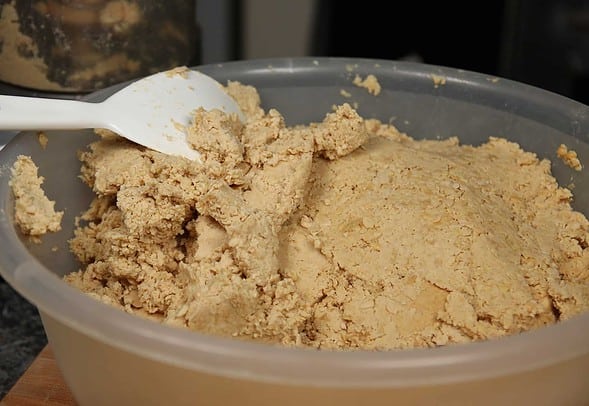
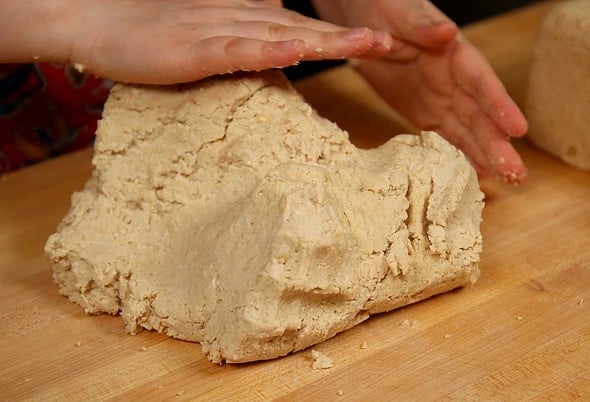
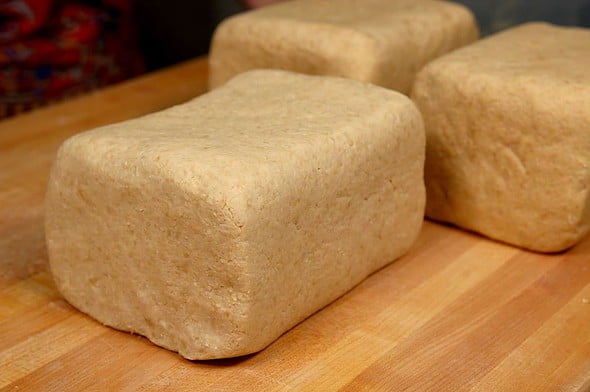
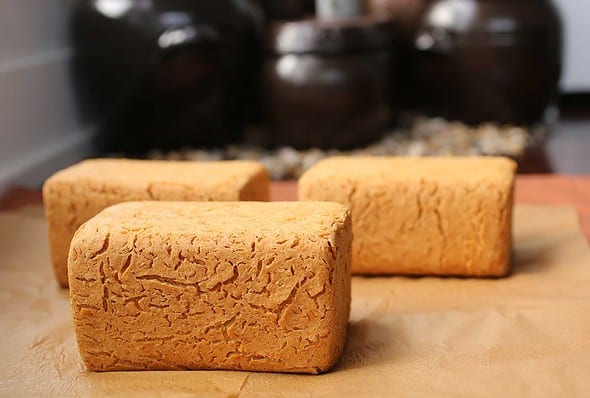
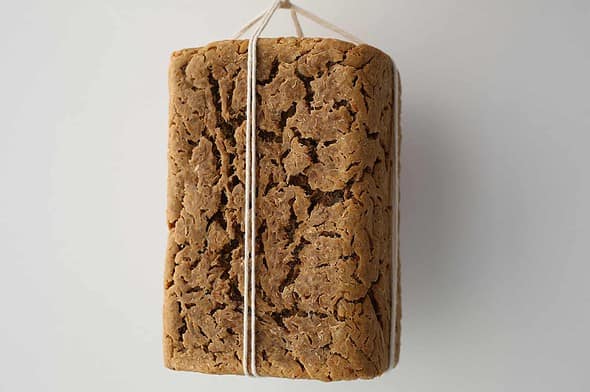
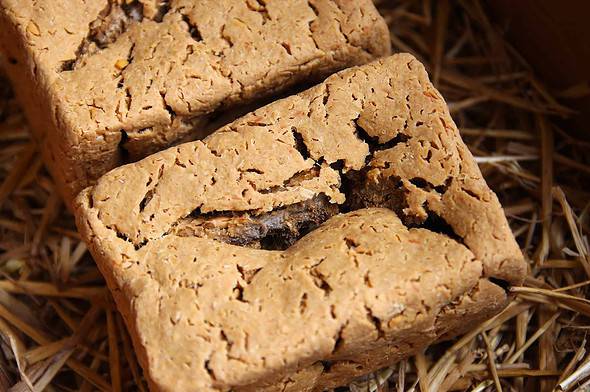
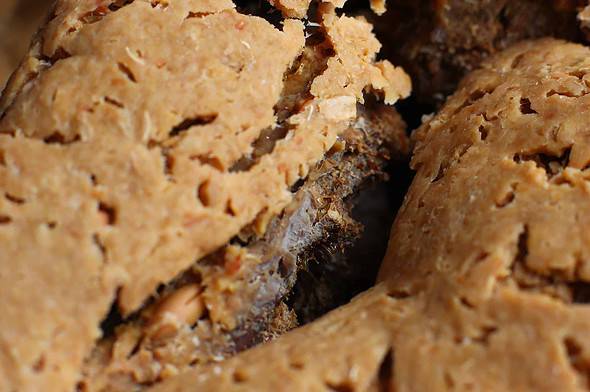
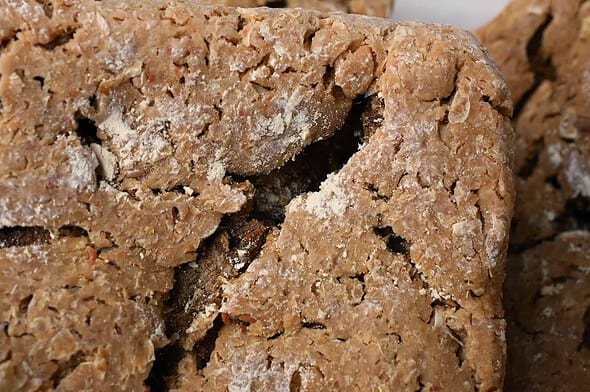
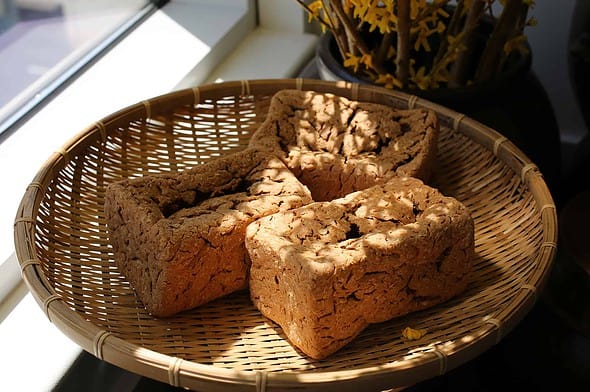
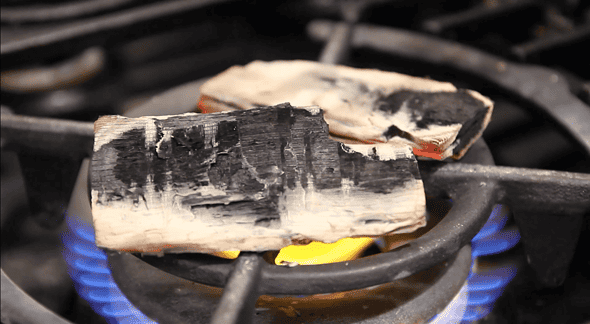
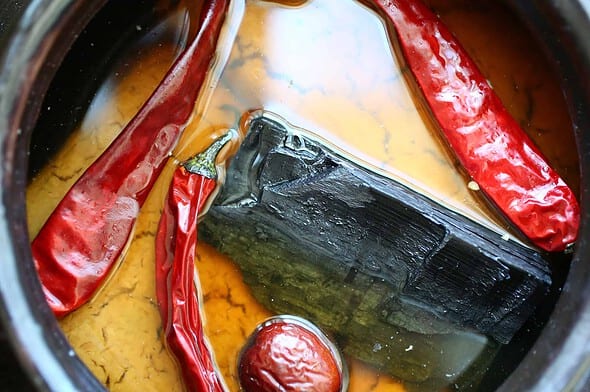
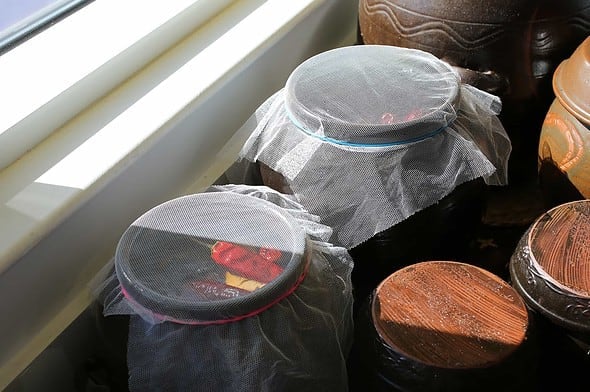
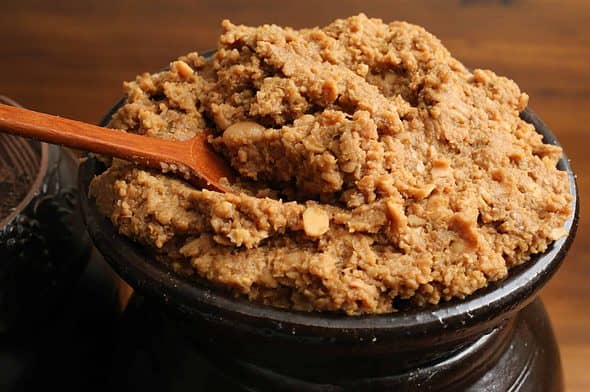























seungaseunga in reply to your question about drying the meju blocks in a dehydrator. I do the initial step after forming the blocks in an air-fryer oven with a dehydrating function to dry and firm the blocks. I do 3-4 hours at 55 degrees Celsius and turn them every 30 minutes or so (with really clean hands). I’ve made 3 batches so far and it’s worked a treat. I also place my blocks in a tiered net herb dryer instead of hanging with string as it allows brilliant air flow without letting bugs anywhere near the blocks. All the batches worked wonderfully. Hope that helps you (belatedly) and a few others too!
See full size image
Hi Maangchi,
Thank you for the recipe. I tried to get my aunt to show me how to make doenjang when I was in Korea last, but my Korean is not so good and her English is non-existent, so the language barrier was too great, so it was really good to watch your video. You are a trooper to take your ganjang to a park to boil!! I used to live in NYC, so I know that was a lot to carry all that stuff out there.
Anyways, I was wondering — can the first part of drying the meju blocks be done in a dehydrator or do they really need to sit on an electric blanket and tied up to attract the initial layer of bacteria?
Thanks!